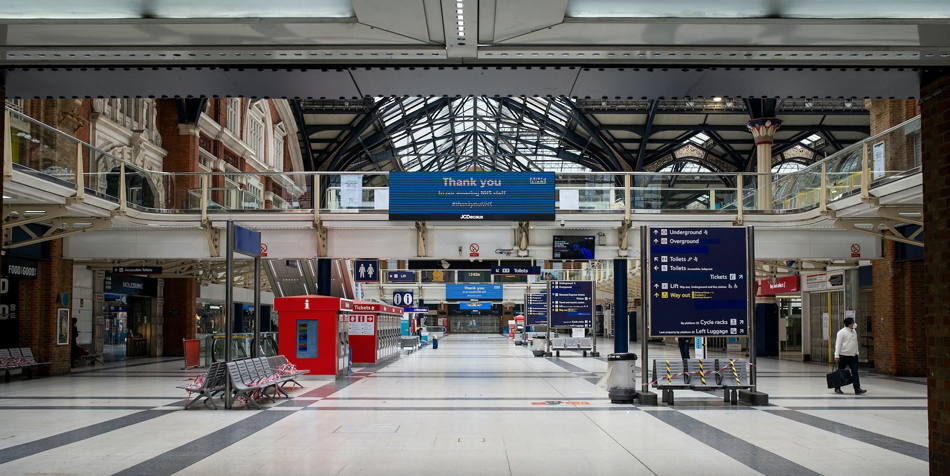Find below the visitor support details of Liverpool Street Station. Besides contact details, the page also offers a brief overview of the commuter rail hub.
Address
Liverpool St,
London EC2M 7PY, UK
Directions: Google Maps
Support
Phone: 03457 11 41 41 (general)
Phone: 03457 48 49 50 (tickets – Network Rail Enquiries)
_____
About Liverpool Street Station
Step back in time and discover the stories and secrets of London Liverpool Street Station, a historical London landmark that has stood the test of time. Nestled in the heart of London, Liverpool Street Station has been a bustling hub for travelers for more than a century.

London Liverpool Street Station has a long and storied history. It first opened in 1874, originally known as the London and North Eastern Railway Station. It was a major transportation hub for passengers traveling north of the city to various other cities and towns in the region.
Over 3.2 million travelers passed through the station each year by the end of the 19th century, making it one of the busiest stations in the UK. In the mid-2000s, the station underwent its last renovation. With over 60 million people passing through its doors each year, London Liverpool Street Station remains one of the country’s busiest.
The iconic structure has been serving London since the 1800s as a major transport hub. Over the years, the station has undergone numerous renovations and expansions. It was originally constructed as a small, single-story station with three tracks but has since been expanded with additional platforms and a glamorous red-brick façade. As well as providing commuters and travelers with a rest stop, the station consists of four floors and 15 platforms.
A great deal of damage was done to London Liverpool Street Station during World War II’s Blitz. In 1940 and 1941, enemy bombs damaged its ticket halls, platforms, and railway lines, resulting in months of repairs and reconstruction. Many of the original structures were also destroyed, leaving nothing but rubble behind. Eventually, the station was restored to its former glory, but the remains of wartime destruction remain, providing visitors with a glimpse into London’s past.
The London Liverpool Street Station has undergone many expansions and renovations over the years. A new western extension was added to the station in the 1950s, providing additional platforms and a grand concourse. The station was revamped in the early 1900s to accommodate the increasing number of passengers.
Further renovations were carried out in the 21st century, including the installation of a new glass roof in the central area of the station. Today, London Liverpool Street Station stands as a testament to its extraordinary history of restoration and expansion.
Founded in 1874 as the eastern terminus of the Great Eastern Railway, Liverpool Street Station is today an iconic transportation hub in London. As a result, it has become a key part of the capital’s transport system.
The station is known for its impressive architecture, which includes a magnificent glass roof and a large clock tower. The station features a unique collection of art as well as convenience stores, newsagents, and cafes.
One of London’s busiest railway stations, Liverpool Street Station, is connected to various services. You can get to major cities in the UK and beyond by direct trains to London Stansted, Cambridge, Ipswich, Norwich, and Ely. You can visit the Network Rail website for schedule, tickets and for reporting lost property.
The station also offers long-distance services such as the London to Edinburgh Virgin Trains East Coast line and the Caledonian Sleeper to Scotland. Additionally, Liverpool Street Station is the terminus of the Central line of the London Underground and is served by multiple buses and taxis.
Its rich history and impressive features have made it a beloved hub of activity in London. London Liverpool Street Station is one of the world’s oldest and most iconic railway stations. Its construction was a spectacular feat of engineering, and its history spans centuries. It is a remarkable feat of engineering and a marvel of city transportation for those visiting London.
